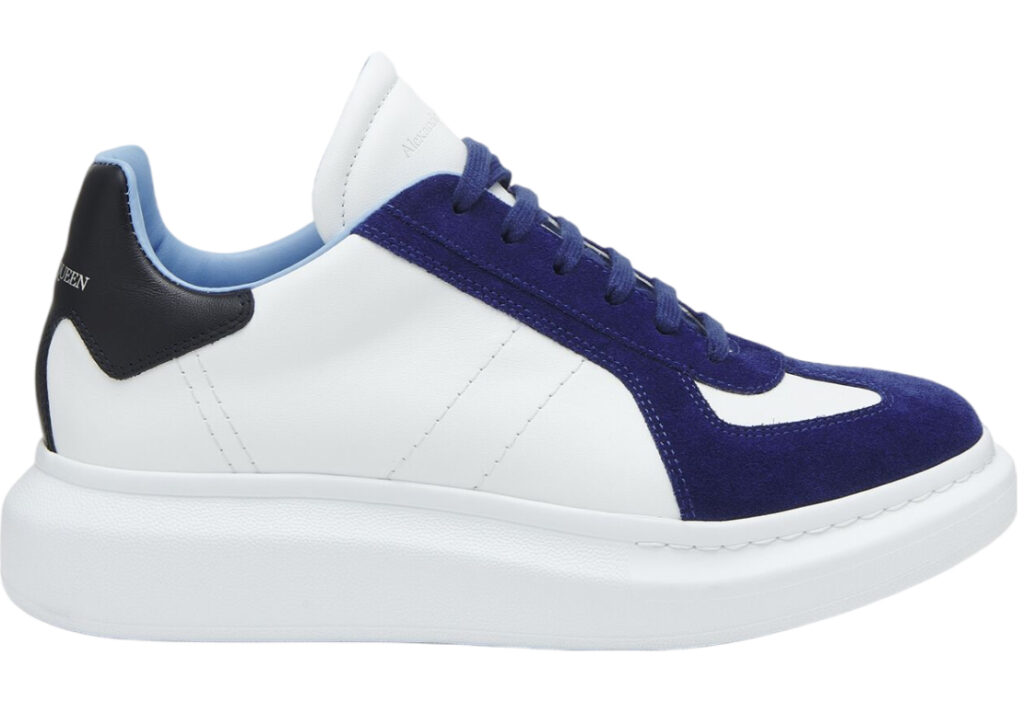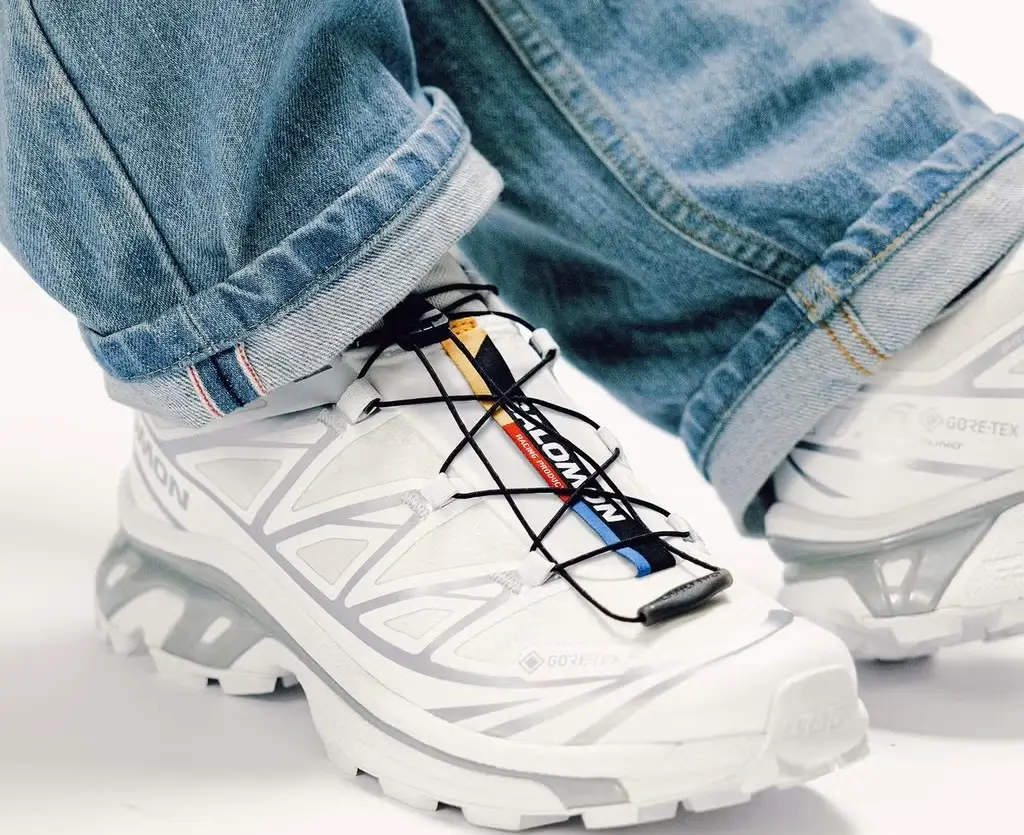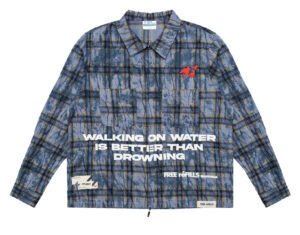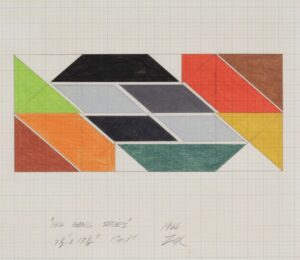The Alexander McQueen Oversize White Blue Retro Shoe isn’t just a sneaker—it’s a calibrated symbol of fashion’s eternal return. Launched in a world already saturated by maximalist silhouettes, bulky trainers, and countless imitations of the dad-shoe trend, McQueen’s contribution stands apart not because it is louder, bulkier, or more rebellious—but because it is hauntingly restrained. Its clean white leather body, subtly accented by a single pastel-blue suede heel tab, resurrects elements of 1980s tennis court minimalism and fuses them with the architectural grandeur that defines the house of McQueen. This is not retro in the nostalgic sense—it’s retro as memory work.
Every inch of the Oversize White Blue Retro Shoe speaks to a deliberate process of spatial exaggeration and historical compression. From its exaggerated rubber sole to the embossed logos and thick, oval laces, the shoe walks a tightrope between heritage and futureproofed design. It signals a kind of generational confidence: to wear these is not to merely participate in trend cycles, but to slow them down. This is the essence of McQueen’s contemporary luxury.
McQueen’s Philosophy Beneath the Sole
To understand the Alexander McQueen Oversize Shoe, one must first grapple with the philosophical weight the McQueen label continues to carry. Though the late designer himself never lived to see the rise of normcore or the chunky sneaker movement, his imprint on the brand—his taste for drama, his love of gothic silhouette, and his obsession with anatomical structure—persists. Under the stewardship of Sarah Burton and now Seán McGirr, the sneaker line reflects not just a response to market demand, but an intellectual continuation of McQueen’s original vision: fashion as confrontation, construction as sculpture, and design as memory.
The Oversize sneaker was introduced in the mid-2010s, around the same time Balenciaga was beginning its own experiments with overblown footwear. But unlike the Triple S or the Track series, McQueen’s shoe never resorted to flamboyance or grotesque layering. Instead, it maintained an unwavering minimalism—one that highlighted silhouette, proportion, and the subtly charged tensions between weight and levity, form and function.
The white and blue iteration feels particularly emblematic of this approach. The stark white upper is not sterile—it is luminous, echoing the crisp precision of 1960s futuristic design. The blue suede tab, meanwhile, is a nod to the past: a kind of design punctuation that recalls vintage adidas Stan Smiths or Reebok Club Cs, but elevated beyond sportswear nostalgia through materiality and scale.
Design as Subtle Drama
At first glance, the shoe appears deceptively simple. A low-top sneaker with no graphics, no patterning, no theatrical overlays. But its quietness is a trick—one of McQueen’s oldest. The shoe plays with disproportion in elegant ways. The padded collar is exaggerated, giving it a pillowy form that slightly bulges away from the ankle. The tongue, broader than most, gently presses up the lacing system and offers a visible canvas for the heat-embossed logo. The eyelets are oversized and spaced wide apart, allowing the laces to curve in a semi-elliptical flow down the vamp, like heavy punctuation marks.
The sole is the real scene-stealer: an inflated rubber platform that tapers toward the toe and heel, creating a floating effect. Unlike the ultra-layered soles of its competitors, McQueen’s platform is smooth, unified, and feels almost monolithic. It references orthopedic shoes, subtly, and yet avoids parody. You do not look foolish in the Oversize—you look grounded.
The blue heel tab is rendered in soft suede, offering tactile and tonal contrast. Its muted cerulean feels like a powdery echo from another decade. It is soft, unintrusive, and yet it becomes the defining mark of the shoe. It’s an invitation to look closer—a whisper in a room full of shouts.
The Retro in Contemporary Culture
In an age where sneaker culture has collapsed into a dizzying spiral of drop culture, archive fetishism, and resale hysteria, McQueen’s Oversize series offers a rare pause. It doesn’t promise scarcity. It doesn’t play by seasonal hype cycles. It is always available, and yet never ubiquitous. That is because the Oversize is not about consumption—it’s about reflection.
The white/blue model especially engages with the language of retro not as costume, but as citation. Retro, in this context, becomes a layered affect: a visual shorthand that conjures earlier eras of athleticism, design purity, and tonal discipline. But it does not stop there. The shoe feels like a remix—one that pushes past vintage mimicry and lands somewhere more speculative.
This act of looking backward to move forward is quintessential to McQueen. From his earliest collections—whether invoking Highland rituals, Victorian tailoring, or 18th-century corsetry—McQueen used history as raw material. The white and blue Oversize Shoe takes up that project for today’s global streetwear-savvy consumer. It wears the past without being worn by it.
Materiality and Craftsmanship
Luxury in footwear has always danced around questions of legitimacy. What makes a sneaker worth $600 when a comparable silhouette from a sporting brand retails for a fifth of that? In McQueen’s case, the answer lies in material execution and the labor of aesthetic composition.
The upper is constructed from premium calf leather, full-grain and minimally treated to retain its natural finish. The leather’s stiffness softens with wear, creasing gracefully rather than collapsing. Its resistance to time is part of its charm. Unlike synthetic uppers or engineered mesh panels, McQueen’s leather ages. It becomes yours.
The blue suede patch is cut with surgical precision and stitched to hover just above the heel counter seam. The lining, often overlooked in sneaker construction, is padded and breathable, preventing friction without compromising its shape.
The outsole is thermoplastic rubber, molded in one seamless piece with traction channels shallow enough to retain elegance yet deep enough to perform. The insole, lined in smooth leather, offers an arch lift rarely seen in luxury sneakers. Nothing about this shoe is accidental.
A Shoe That Refuses to Rush
In a fashion world increasingly defined by velocity, the Oversize White Blue Retro Shoe moves at its own pace. It isn’t a shoe built for marathons, nor does it pretend to be. It is an object of repose—of walking slowly, intentionally, through spaces that require presence. The oversize sole lifts you just enough to notice things differently. Street corners feel sharper. Sunlight hits the toe box at a brighter angle.
This is footwear as architecture. And much like the buildings that change our relation to space, the Oversize doesn’t just move you—it repositions you. That might be its greatest accomplishment: to offer the wearer not just aesthetic coherence, but spatial recalibration.
In an era where loudness is often mistaken for innovation, McQueen opts for distortion through scale and clarity through repetition. There is no gimmick here, no absurd limited edition run. Just a perfected iteration of a single idea: make the ordinary enormous, and in doing so, make it extraordinary.
Cultural Resonance and Commercial Legacy
Since its debut, the Oversize sneaker has become a quiet icon. Worn by musicians, models, architects, and fashion editors alike, it defies demographic expectations. Unlike many high-fashion sneakers, it doesn’t scream wealth or status—it whispers sophistication.
Part of its resonance lies in its versatility. It pairs effortlessly with tailored trousers, pleated skirts, and oversized coats. It doesn’t demand a look—it supports one. In this way, it has become a go-to staple in fashion-forward wardrobes across global cities, from Seoul to Milan.
It is also an important commercial pillar for Alexander McQueen. Though the brand is most associated with theatrical couture, it is the Oversize that keeps the house in motion financially. In fact, it is one of the rare cases where a single sneaker helped solidify a brand’s modern relevance without compromising artistic legacy.
That tension—between commerce and craft—is precisely what makes the white and blue version so critical. It shows that you can make something both saleable and soulful, wearable and worthy of discourse.
A Monument in Miniature
The Alexander McQueen Oversize White Blue Retro Shoe doesn’t reinvent the wheel. Instead, it reimagines the road. In an industry too often addicted to speed, novelty, and spectacle, McQueen’s sneaker achieves something radical: it slows fashion down and refocuses it on form, intention, and memory.
This shoe is not just an accessory. It is a wearable thesis. A sculptural essay on the aesthetics of presence. A reminder that even in the churn of trend culture, it is still possible to make something lasting.
To walk in these is to echo decades of design history, filtered through one of fashion’s most rigorous lenses. It is, in a word, McQueen.
No comments yet.








